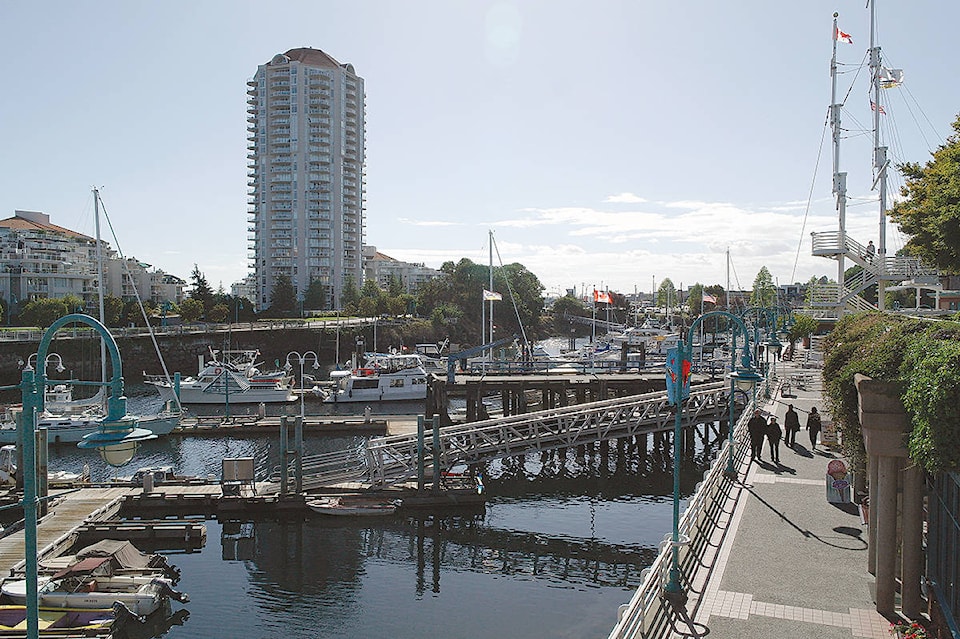After the resounding defeat of Nanaimo’s events centre referendum, a consistent voice we’ve heard is the one calling for a Granville Island-like development on the south industrial waterfront, where the multiplex was slated to go. A mix of shops and restaurants would anchor the development, just like the popular public market beneath the viaduct in Vancouver.
The two areas have a lot in common.
Vancouver’s Granville Island was initially developed as cheap industrial land, increased in size from fill from nearby False Creek. Up to 80 lots were available for manufacturers and industrial use, on narrow parcels with access to the water.
Nanaimo’s south downtown waterfront is still in its industrial phase, home to Seaspan (which plans to consolidate operations at Duke Point) and former home to a number of industrial uses. The Nanaimo Port Authority has its cruise ship terminal nearby, which is also used by Helijet for harbour-to-harbour flights to Vancouver. Ship docks, rail yard and sawmill have all called the area home throughout the years. The City of Nanaimo bought the more than 10-hectare parcel of land in 2013 for $3.4 million and spent more than $1 million so far in cleanup, environmental assessment and servicing.
Granville Island, according to my online research, continued as an industrial site until roughly the 1970s, when ownership of the land was transferred to Canada Mortgage and Housing Corporation. The Granville Island seawall was completed and the mix of shops, restaurants, breweries, distilleries and artisans moved in.
That’s the short version. The story of Granville Island is actually much longer – nearly 40 years long, in fact.
Vancouver historian John Atkin told CBC News that Granville Island evolved over a period of time – not a flashy, teardown-and-rebuild that you’d expect today. The public market opened in 1977, followed by the Emily Carr University of Art and Design a short while later.
Folks repurposed old buildings as they came available, meaning that the public market sat next to a working sawmill for a number of years. Granville also broke all the rules of a public space, with no proper separation of sidewalks and traffic. Yet it’s one of the most popular destinations for residents and tourists alike, attracting more than 10 million visitors annually.
I do believe a Granville Island could work in Nanaimo. Our Harbourfront Walkway is easily the most attractive activity for residents and tourists, with the seawall from Maffeo Sutton Park to the Gabriola ferry terminal packed with walkers, runners and folks just sitting and eating ice cream. Extending the walkway through to the south downtown waterfront lands mirrors the early years of Granville Island and builds on one of Nanaimo’s most successful public projects.
Volunteers and community leaders spent months drafting the South Downtown Waterfront Initiative, a document which outlines key goals, which include access and connectivity; support for the working harbour; ecological principles; visionary land use; and cultural considerations.
Past councils have tried standalone redevelopment projects, such as the Port Theatre and the Port of Nanaimo Centre, in the hopes they would spur revitalization of downtown. To a certain extent, they have, but a project like Granville Island is not a one-hit wonder. It will take a generation or more and multiple champions to make the vision for the south industrial waterfront a reality.
editor@nanaimobulletin.com
